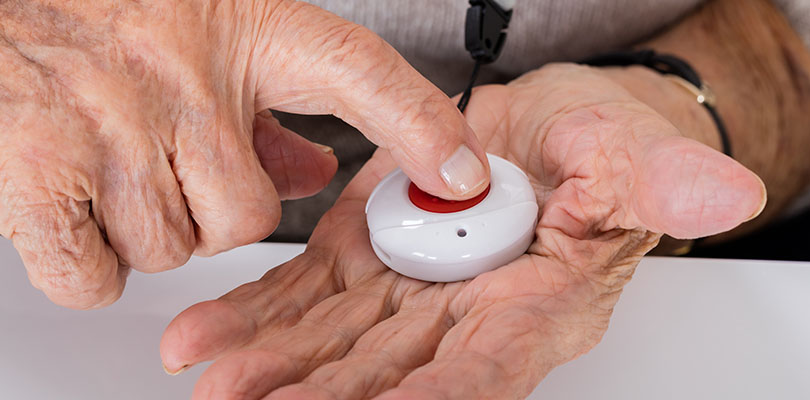What Is Polymyalgia Rheumatica?
Polymyalgia rheumatica (PMR) is a prevalent inflammatory condition often detected in older adults that triggers muscle aches and pain, stiffness, and flu-like symptoms.
It’s more prevalent in women compared to men and occurs mostly in Caucasians compared to other races. PMR mainly affects persons over the age of 70 years and is seldom seen in individuals below 50 years.
Also, polymyalgia rheumatica a self-limiting disorder that lasts anywhere from one to five years, depending on the affected person.
Causes of Polymyalgia Rheumatic
The specific cause of PMR isn’t completely understood. However, experts believe that it may be an autoimmune disease. Other researchers have developed theories to explain its cause.
One theory is that this chronic disorder occurs due to inflammation in the fluid-filled sacs around large joints called the bursae. This soreness may result in referred pain in other body areas. For instance, if the inflammation attacks the hip and shoulder joints, pain may be felt in the thighs and upper arms.
Some researchers believe that specific genes and gene variations, as well as certain environmental factors, may make a person more likely to develop this inflammatory condition.
Lastly, considering that this disorder is rare in younger populations, the aging process may also be a trigger for the development of PMR.
Polymyalgia Rheumatica Symptoms
Symptoms of PMR are the result of inflammation of the joints and surrounding tissues. Symptoms may come on slowly or rapidly, and they tend to be worse in the morning and gradually improve throughout the day.
Typically, a person with PMR will experience pain and stiffness in at least two of the following areas:
- Upper arms and shoulders
- Neck
- Hips
- Buttocks
- Thighs
Other symptoms that may occur, include:
- Pain that gets worse with inactivity
- Difficulty in switching from a seated position to a standing one
- Joint and muscle ache
- General weakness
- Fever
- Tiredness
- Reduced appetite
- Sleep disturbances
- Depression
Many people wonder if cracking your knuckles can cause arthritis, thankfully it does not. However, there still are a few reasons to try and stop the habit.
Although rare, some people experience swelling of feet, forearms, and hands. Others may develop carpal tunnel syndrome symptoms like irritation and weakness in the arm, wrist, and hand. It’s important to seek professional medical assistance if you experience stiffness, pains, or aches that disrupt your sleeping pattern and limit your capability to perform everyday activities like getting dressed.
Additionally, about 15% of individuals with PMR can also suffer from a possibly dangerous inflammatory condition known as giant cell arteritis. If you experience severe headaches, especially on one side, have tenderness of your scalp, jaw pain, or vision changes, consult your doctor immediately as you may be suffering from giant cell arteritis.
Polymyalgia Rheumatica Diagnosis
It’s challenging to differentiate PMR symptoms from those of other inflammatory disorders such as arthritis and lupus.
To come up with a correct diagnosis, your doctor will conduct a comprehensive history and physical examination including range of motion testing of your arms, legs, and neck, and run various tests to identify inflammation and blood problems.
If they suspect PMR, they may recommend blood tests to look for inflammation indications in your body. Other things your doctor will check for through these blood tests include levels of C-reactive proteins and the rate of red blood cells sedimentation. An unusually elevated sedimentation rate coupled with high levels of C-reactive proteins typically indicates inflammation.
Ultrasound is another technique your doctor may perform to inspect your joints and tissues for inflammation. This technique leverages high-frequency sound waves to generate close-up pictures of the soft tissues in various body parts. These images can help your doctor in differentiating PMR from other disorders that trigger similar symptoms.
Since there’s a relationship between PMR and giant cell arteritis, your doctor may want to do a biopsy. This simple, minimally invasive, low-risk procedure entails taking out a small tissue sample from your artery. This sample is then examined for signs of inflammation in a laboratory.
Polymyalgia Rheumatica Treatment
Treatment for PMR aims to minimize the symptoms of inflammation, pain, aching, stiffness, tiredness, and fever using a combination of certain anti-inflammatory medicines, exercise, and diet changes.
Anti-inflammatory Medications and Non-Steroidal Anti-inflammatory Drugs (NSAIDs)
PMR medications are called anti-inflammatory medications, and a good example is a prednisone, which is a corticosteroid. During steroid therapy, medical specialists monitor the effect on inflammation by looking at the levels of C-reactive proteins and the rate of red blood cell sedimentation. People with PMR typically report quick improvement after undergoing steroid treatment.
In special cases, medications like azathioprine or methotrexate may be added to make a gradual reduction of the steroid dose easier. This therapy aims to manage symptoms with the lowest possible steroid dosage.
In minor cases of PMR, NSAIDs like naproxen and ibuprofen may be enough to control symptoms.
Exercise
Your doctor may recommend a regular workout schedule with intervals of rest as part of your treatment program. The goal of regular exercise is to improve joint flexibility and performance.
Your general health and fitness status will determine the type of activities that will be incorporated into your fitness plan.
PMR-Friendly Diet
Eating a PMR-friendly diet may minimize symptoms and might also be a valuable tool for counteracting certain side effects that some persons with PMR experience because of prolonged usage of corticosteroids.
Your diet should consist of calcium-rich foods like soybeans and dairy products such as milk, healthy fats, and anti-inflammatory foods such as tomatoes and green leafy vegetables.
Conclusion
Polymyalgia rheumatica will ultimately resolve on its’ own, but this may take up to five years. A healthy diet, exercise, adequate rest, and strict adherence to medication treatment are essential in managing this condition and optimizing your quality of life.







